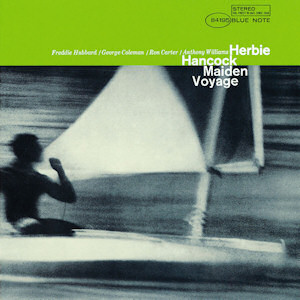RIP Rudy Van Gelder, Jazz’s Undisputed Recording Giant: 1924-2016
His name was Jazz – literally.
Rudy Van Gelder passed away on August 25 at his home in Englewood Cliffs, NJ, at age 91. It would be hard to name an audio engineer who was more closely associated with the genre they excelled in than Van Gelder. Over the many decades that his career spanned, the New Jersey native tracked many of the defining jazz records in history, and was just one more reason why the New York region maintained a leading reputation for recording.
Over nearly 50 years Van Gelder’s studios – starting with his parents’ home in Hackensack and on to his legendary Englewood Cliffs facility – hosted an incredible guest list: John Coltrane, Miles Davis, Thelonious Monk, Sonny Rollins, Art Blakey, Joe Henderson, Freddie Hubbard, Wayne Shorter, and Horace Silver, just to start. Blue Note Records came to depend on him for a trademark sound that only enlarged their reputation, and Prestige Records was a major client as well. The classics under his aegis include Coltrane’s A Love Supreme, Davis’ Walkin’, Herbie Hancock’s Maiden Voyage, Sonny Rollins’s Saxophone Colossus, and Silver’s Song for My Father.
To get a sense of his massive accomplishments, imagine having a 508-hour playlist of your work compiled on Spotify. That’s available here (which I found via the insightful post by Josh Jones of Open Culture), and its packed with deluxe listening, even if you don’t consider yourself a jazz head.
One engineer who have the good fortune to get to know Van Gelder is Russ Hamm, President of NYC high-speed Internet provider Rainbow Broadband and the founder of Sonic Presence, which is poised to introduce advanced new audio technology for virtual reality (VR).
“I met Rudy when I worked at (pro audio equipment distributor) Gotham Audio — he bought equipment from us for his studio,” recalls Hamm, who authored the seminal AES article Tubes Versus Transistors. “The relationship with me started in the 1980’s when I would help him with disk cutting. In those days he still cut lacquer reference disks for artists and producers to approve: He owned Scully cutting lathes, which we retrofit with Neumann cutter heads and electronics. Operating and maintaining them was tricky, which is where I came into the picture.
“Rudy always kept his recording techniques to himself,” Hamm continues. “I never knew what artists he was working with, but he was always booked. The jazz guys seemed to flock to his studio. That’s surprising because it was a ‘no smoking’ facility in the days when everyone smoked! You had to go outside to smoke.”

Herbie Hancock’s 1965 album “Maiden Voyage” was one of countless classics captured by Rudy Van Gelder
Although Van Gelder is associated with an era of analog recording, he also displayed a readiness to evolve throughout his long career. It was an attitude that helped him earn some of the most prestigious awards in the industry, including being named a Jazz Master by the National Endowment for the Arts and a Fellow of the Audio Engineering Society, both in 2009. In 2012 he received the GRAMMY Trustees Award from The Recording Academy, followed by the AES Gold Medal in 2013.
“Sometime in the 90’s Rudy bought a Weiss digital processing system from me,” Hamm says. “I was surprised because I always thought of Rudy as an analog guy. But it turns out, he was very good at adopting digital technology. Daniel Weiss was a pioneer in developing digital tools like the parametric equalizer, dynamics processor and especially dithering. Rudy was an early adopter of these tools along with Bob Ludwig, Ted Jensen and others. This was long before today’s software plugins.
“One day Rudy called to tell me about a special project he was going to do. It was Jazz in HD Video with six channel sound: He wanted to do all the audio recording and mixing in six channel digital format. No equipment existed that could do that at that time, so I asked Daniel Weiss if he was up to the challenge. He was and we delivered a digital system to Rudy that could do the job.”
Hamm discovered another unexpected benefit of being asked to work on that project. “Rudy asked me to deliver it to his studio in person!” he says. “No one had ever been there before except musicians. In fact the stories of Rudy refusing visitors entry to the studio are legendary. Thereafter, Rudy invited me to the studio many times and I also brought along Daniel Weiss.”
Imagining the thousands of sessions at that secret studio – seen by so few but heard by so many – brings it all back to that name that really was Jazz. Say it to yourself, then sing it out loud: Rudy Van GELDER! You can hear it being blasted out as five notes on Davis’ trumpet, flowing freely from Coltrane’s sax, twinkling in a run from Monk’s right hand, or as an agile fill beating out of Art Blakey’s drum kit.
What’s in a name? For Rudy Van Gelder, it was pure music.
— David Weiss
Please note: When you buy products through links on this page, we may earn an affiliate commission.







Danwriter
September 8, 2016 at 4:12 pm (9 years ago)Rudy was one of the greats, but I do regret his longstanding reluctance to discuss techniques. This TapeOp interview (http://tapeop.com/interviews/43/rudy-van-gelder/) is the closest I’ve found to getting inside his right hemisphere, but it’s still got a few “Without going into detail…” and “I don’t want to be too specific…” phrases steering the conversation away from precisely how did what he did. It makes me that much more appreciative of the guys like Schmitt and Cherney and Z and Wagner, et al. who have always been forthcoming about that kind of detail. But Rudy will always be the king of the jazz hill.